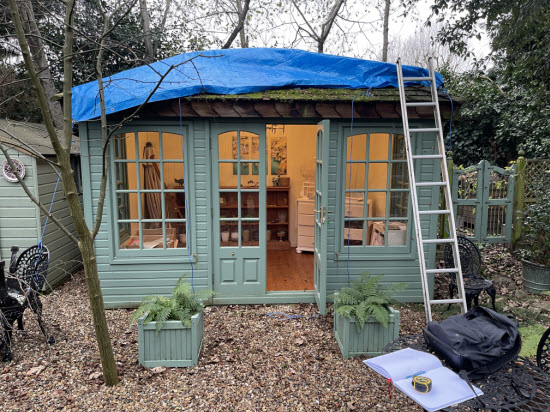When You Just Need to Keep the Rain Out: Temporary Shed Roofing That Works
Remember That Time Right Before Christmas?
A few years back, I got a call from a couple who had just moved into their new home-just a week or two before Christmas. The house was fine, but the shed? Not so much. It leaked like a sieve. They had boxes of garden furniture, tools, and toys they didn't want sitting in the living room for the holidays. But they also didn't have the headspace or time to plan a proper shed roof replacement right then.
They didn't need a perfect solution. They just needed a quick one. Some temporary shed roofing to hold the line until spring.
And that's where temporary shed roofing comes in.
Why a Quick Fix Can Be a Smart Move
It's tempting to think, 'I'll just wait until the weather improves and then fix it properly.' But here’s the thing: Every time it rains, your shed gets a little worse. Timber absorbs moisture. Tools rust. Cardboard boxes collapse. And when the day finally comes to fix the roof, you're also dealing with rot, mould, and ruined belongings.
Sometimes, doing nothing ends up costing more than doing a little something.
Two Good Options That Won't Break the Bank
1. Damp Proof Membrane (DPM): The Secret Weapon No One Talks About
DPM is a thick, black plastic sheeting normally used under concrete floors—but it works brilliantly as a temporary shed roof cover. It's tough, cheap, and surprisingly effective for a few months.
Here's how it works:
- Lay it over the roof like a blanket.
- Fix it around the edges with battens (just screw a bit of timber over the plastic).
- If your shed is in a windy area, consider putting extra battens across the top to keep everything in place.
 This is the shed with it's temporary shed roof in place, just before Christmas
This is the shed with it's temporary shed roof in place, just before Christmas
Pro tip: In sheltered areas (like down south), edge battens are usually enough. But if you're up north or in a more exposed spot, go the extra mile with top battens.
2. Tarpaulins: Your Reusable Go-To
Tarps are the old faithful. You can pick one up at any DIY store or online. Just don't go for the absolute cheapest-those tend to shred in UV light or flap themselves to pieces in the wind.
The better ones:
- Come with eyelets around the edge.
- Can be tied or bungeed down securely.
- Are reusable for covering logs, garden furniture, or even making a camping shelter in the summer.
 This shed owner used a tarpaulin to stop the rain coming in before a more permanent repair could be undertaken
This shed owner used a tarpaulin to stop the rain coming in before a more permanent repair could be undertaken
Think of it like buying a spare umbrella-handy now, and you'll use it again later.
Who This Advice Is For
You've just found your shed leaking. You don't want your stuff to get ruined, but you're not ready for a full re-roofing job-yet. Maybe it's winter. Maybe life's just too busy. You need a stopgap that's simple, quick, and doesn't cost a fortune.
Sound familiar? Then this guide is for you.
Back to That Couple at Christmas...
They went with the DPM option. A couple of lengths of timber, a few screws, and their belongings stayed dry all through the festive season and beyond. By the time spring came, they had a proper plan-nd a dry, intact shed to start from.
So if you're in that tricky in-between place-where it's not the time for a big fix, but you can't ignore the problem either-there's your answer. A smart, temporary cover now could save you a lot of hassle (and money) later on.

Keep in touch with our monthly newsletter
Shed Building Monthly




